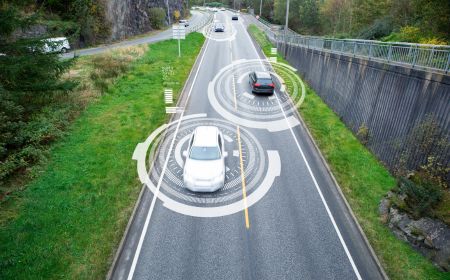Smart Ways to Monitor and Control Idle Time in Your Fleet
In the fleet industry, you have probably heard the term “idling” many times. But what does it actually mean?
Essentially, idling is when a vehicle’s engine is left running while parked or stationary. This is typically seen when a driver stops at a red light or waits in a parked position. Idling is harmful to the vehicle itself, as it is an ineffective way to warm up the engine and other components. A better way to warm up is to drive off slowly, as this warms up the transmission, tires, suspension, steering and contributes to a longer lifespan of the vehicle.
There are several reasons why drivers may choose to let their vehicles idle.
False Economy:
Drivers who need to wait for a client or take their breaks in the vehicle may idle it to keep the air conditioning and radio running, and they may believe that idling is more efficient than stopping and starting the vehicle. However, today’s high-efficiency starters and engines have made that a false economy.

Environmental Impacts of Idling:
Those who need to make lots of stops and deliveries may also want to leave their truck idling while they run a package to the door. However, what most fleet managers and drivers don’t realize is that idling can be surprisingly expensive in terms of both fuel and fumes. In fact, idling for just 10 seconds uses more fuel than turning a truck off and back on again. This is even more significant for smaller vehicles, where the fuel cost to restart compared to idling is even lower. Additionally, idling burns fuel and emits exhaust, even though the car doesn’t require gasoline to move anywhere. This contributes significantly to carbon emissions and noise pollution, particularly for larger trucks. It also creates a potentially harmful environment for employees and business partners who are working around an idling truck. Furthermore, customers who dislike the exhaust and the noise of an idling truck may negatively associate your fleet with these factors.

Fortunately, there are ways to reduce idling time. Fleet managers can gain valuable insights into their drivers’ behavior by employing a telematics platform such as Eagle-IoT, which can provide them with a deeper comprehension of how and why drivers are idling. Eagle-IoT vehicle tracking and fleet management software have the capability to reduce idling route optimization. It considers traffic patterns and customer locations to create more efficient routes. Besides this, it can also analyze driver behaviour by providing insight into how and why certain drivers idle (or waste fuel in other ways) more than others in the fleet.
Educate drivers on the downsides of idling
By using fleet management software, fleet managers can not only encourage their drivers to avoid idling for long periods but can also reward and coach them. Eagle-IoT Driver Scorecard provides a recognition system that highlights the drivers who are doing a good job of avoiding excessive idling. Incentivizing drivers for reducing their idle time is a great option to promote the culture. Coaching can be done through conducting seminars and workshops where educational articles or videos can be used to explain the impacts of idling and how it can be avoided. By gaining a better understanding of why drivers idle and how they can be encouraged to avoid excessive idling, fleet managers can make informed decisions about which strategies will work best for their operation. Engine shut-off timers and automatic startup/shutdown features are another great way to reduce idling. However, these may not be the correct solution for fleets primarily running on diesel. Investing in idle reduction technology such as Eagle-IoT carbon emission solution is the ultimate solution for fleets to help in reducing idle time.
The key to making lasting improvements to a fleet is to gain insight and use and analyse the data to track the improvements. With Eagle-IoT user-friendly dashboard, this is now possible.
To explore Eagle-IoT fleet management dashboard.


